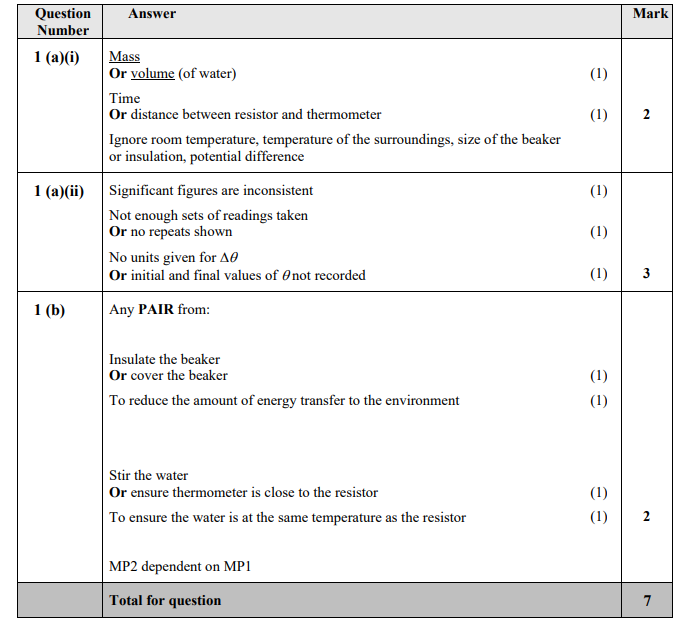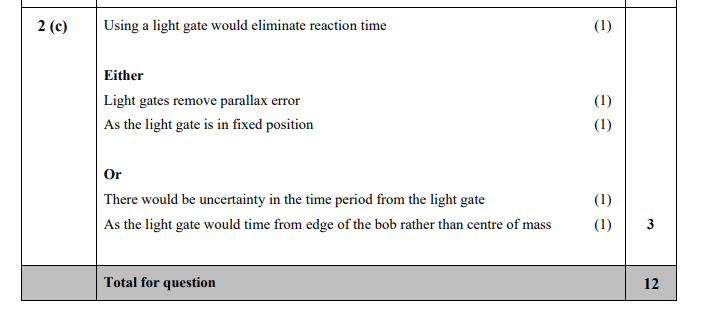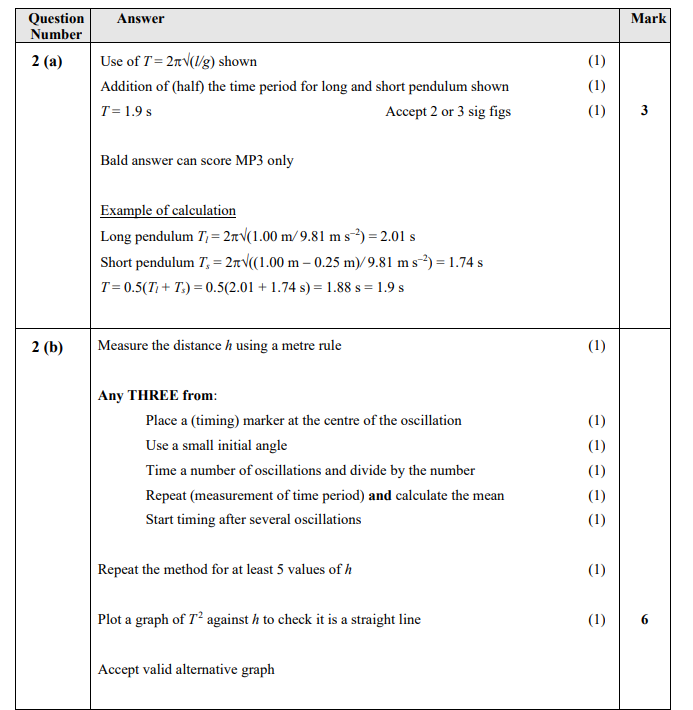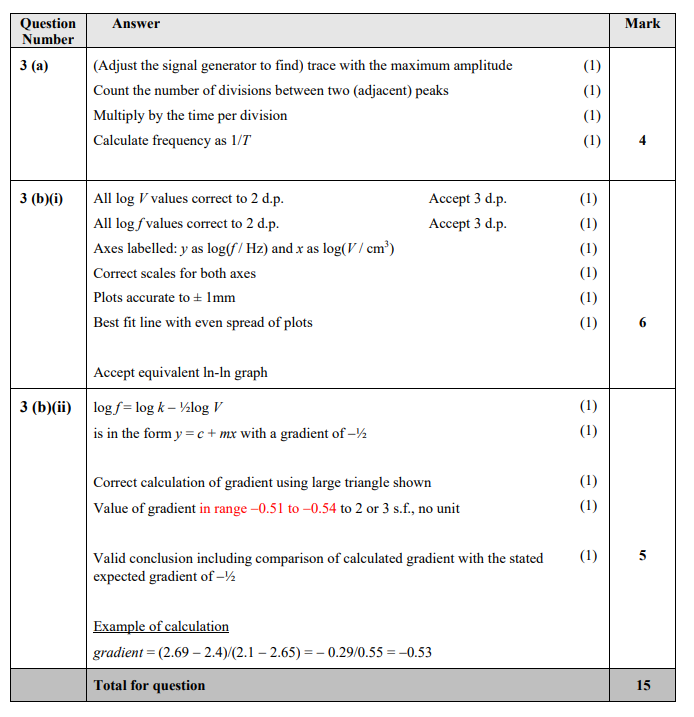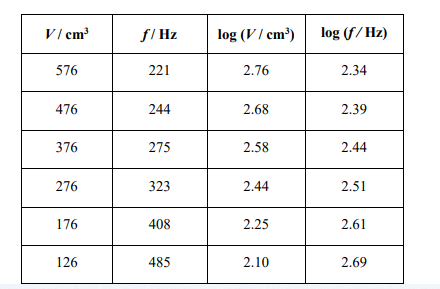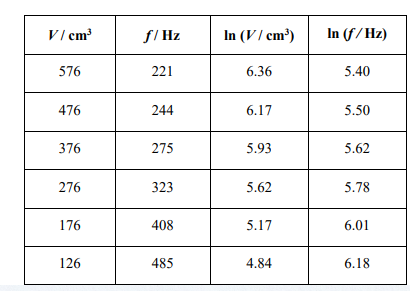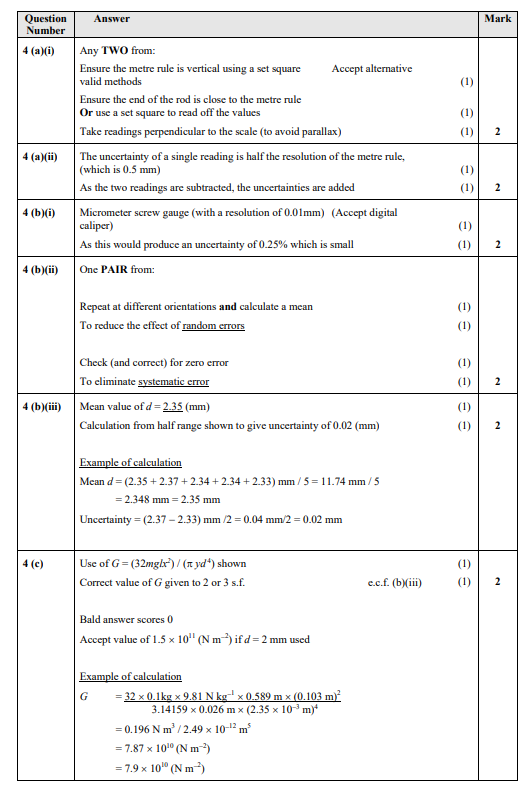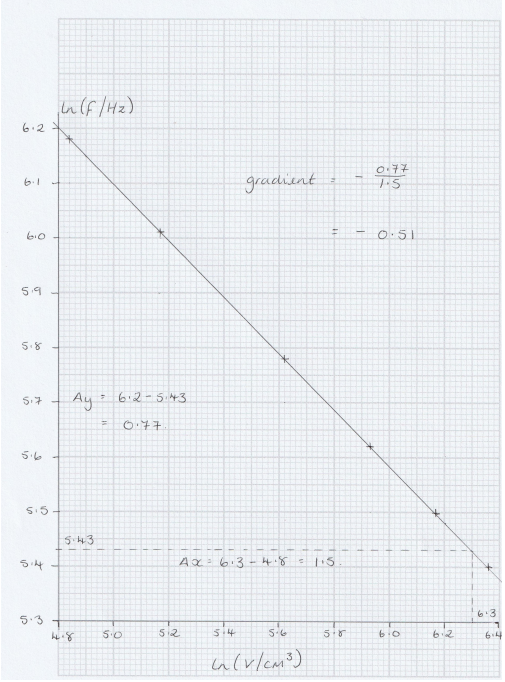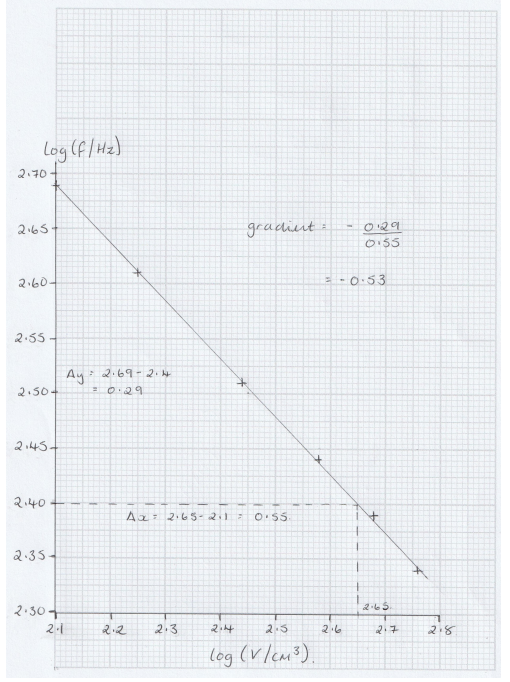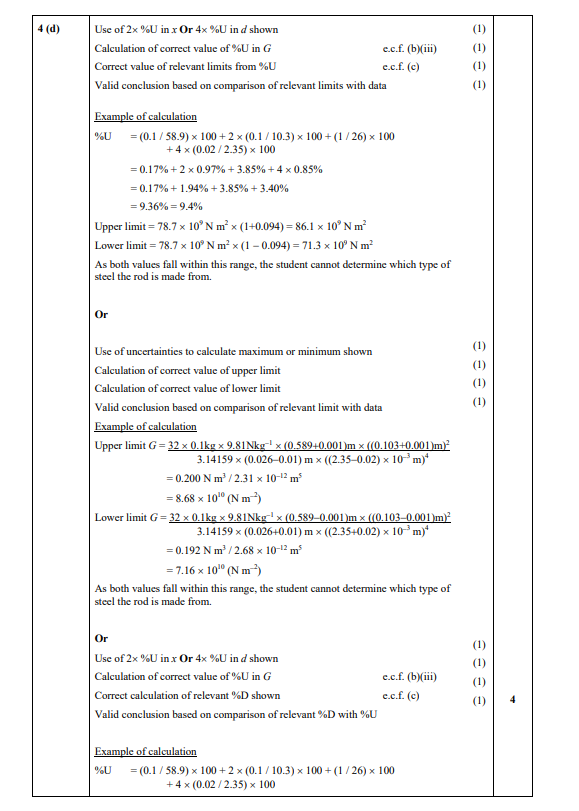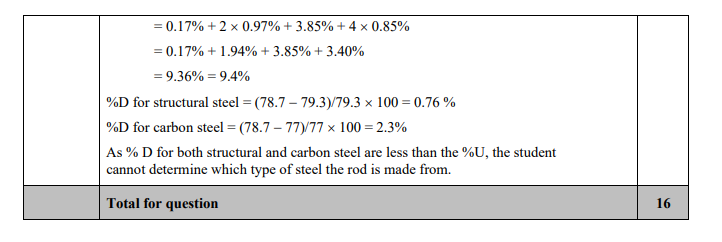Mark Scheme (Results)
October 2021
Pearson Edexcel International Advanced
Level in Physics (WPH16) Paper 01
Practical Skills in Physics II
Edexcel and BTEC Qualifications
Edexcel and BTEC qualifications are awarded by Pearson, the UK’s largest awarding body.
We provide a wide range of qualifications including academic, vocational, occupational and
specific programmes for employers. For further information visit our qualifications
websites at www.edexcel.com or www.btec.co.uk. Alternatively, you can get in touch with
us using the details on our contact us page at www.edexcel.com/contactus.
Pearson: helping people progress, everywhere
Pearson aspires to be the world’s leading learning company. Our aim is to help everyone
progress in their lives through education. We believe in every kind of learning, for all kinds
of people, wherever they are in the world. We’ve been involved in education for over 150
years, and by working across 70 countries, in 100 languages, we have built an international
reputation for our commitment to high standards and raising achievement through
innovation in education. Find out more about how we can help you and your students at:
www.pearson.com/uk
Autumn 2021
Question Paper Log Number: P67150A
Publications Code WPH16_01_2110_MS
All the material in this publication is copyright
© Pearson Education Ltd 2021
General Marking Guidance
• All candidates must receive the same treatment. Examiners must mark the first
candidate in exactly the same way as they mark the last.
• Mark schemes should be applied positively. Candidates must be rewarded for what they
have shown they can do rather than penalised for omissions.
• Examiners should mark according to the mark scheme not according to their perception
of where the grade boundaries may lie.
• There is no ceiling on achievement. All marks on the mark scheme should be used
appropriately.
• All the marks on the mark scheme are designed to be awarded. Examiners should
always award full marks if deserved, i.e. if the answer matches the mark scheme.
Examiners should also be prepared to award zero marks if the candidate’s response is
not worthy of credit according to the mark scheme.
• Where some judgement is required, mark schemes will provide the principles by which
marks will be awarded and exemplification may be limited.
• When examiners are in doubt regarding the application of the mark scheme to a
candidate’s response, the team leader must be consulted.
• Crossed out work should be marked UNLESS the candidate has replaced it with an
alternative response.
Mark scheme notes
Underlying principle
The mark scheme will clearly indicate the concept that is being rewarded, backed up by examples. It is
not a set of model answers.
For example:
(iii) Horizontal force of hinge on table top
66.3 (N) or 66 (N) and correct indication of direction [no ue]
[Some examples of direction: acting from right (to left) / to the left / West /
opposite direction to horizontal. May show direction by arrow. Do not accept a
minus sign in front of number as direction.]
(1) 1
This has a clear statement of the principle for awarding the mark, supported by some examples
illustrating acceptable boundaries.
1. Mark scheme format
1.1 You will not see ‘wtte’ (words to that effect). Alternative correct wording should be credited in
every answer unless the ms has specified specific words that must be present. Such words
will be indicated by underlining e.g. ‘resonance’
1.2 Bold lower case will be used for emphasis.
1.3 Round brackets ( ) indicate words that are not essential e.g. “(hence) distance is increased”.
1.4 Square brackets [ ] indicate advice to examiners or examples e.g. [Do not accept gravity] [ecf].
2. Unit error penalties
2.1 A separate mark is not usually given for a unit but a missing or incorrect unit will normally
mean that the final calculation mark will not be awarded.
2.2 Incorrect use of case e.g. ‘Watt’ or ‘w’ will not be penalised.
2.3 There will be no unit penalty applied in ‘show that’ questions or in any other question where
the units to be used have been given, for example in a spreadsheet.
2.4 The same missing or incorrect unit will not be penalised more than once within one question
(one clip in ePen).
2.5 Occasionally, it may be decided not to penalise a missing or incorrect unit e.g. the candidate
may be calculating the gradient of a graph, resulting in a unit that is not one that should be
known and is complex.
2.6 The mark scheme will indicate if no unit error penalty is to be applied by means of [no ue].
3. Significant figures
3.1 Use of an inappropriate number of significant figures in the theory papers will normally only
be penalised in ‘show that’ questions where use of too few significant figures has resulted in
the candidate not demonstrating the validity of the given answer.
3.2 The use of g = 10 m s−2 or 10 N kg−1 instead of 9.81 m s−2 or 9.81 N kg−1 will be penalised by
one mark (but not more than once per clip). Accept 9.8 m s−2 or 9.8 N kg−1
4. Calculations
4.1 Bald (i.e. no working shown) correct answers score full marks unless in a ‘show that’ question.
4.2 If a ‘show that’ question is worth 2 marks then both marks will be available for a reverse
working; if it is worth 3 marks then only 2 will be available.
4.3 use of the formula means that the candidate demonstrates substitution of physically correct
values, although there may be conversion errors e.g. power of 10 error.
4.4 recall of the correct formula will be awarded when the formula is seen or implied by
substitution.
4.5 The mark scheme will show a correctly worked answer for illustration only.
Example of mark scheme for a calculation:
‘Show that’ calculation of weight
Use of L × W × H
Substitution into density equation with a volume and density
Correct answer [49.4 (N)] to at least 3 sig fig. [No ue]
[If 5040 g rounded to 5000 g or 5 kg, do not give 3rd mark; if conversion to kg is omitted
and then answer fudged, do not give 3rd mark]
[Bald answer scores 0, reverse calculation 2/3]
Example of calculation
80 cm × 50 cm × 1.8 cm = 7200 cm3
7200 cm3 × 0.70 g cm-3
= 5040 g
5040 × 10-3 kg × 9.81 N/kg= 49.4 N
(1)
(1)
(1) 3
5. Graphs
5.1 A mark given for axes requires both axes to be labelled with quantities and units, and drawn
the correct way round.
5.2 Sometimes a separate mark will be given for units or for each axis if the units are complex.
This will be indicated on the mark scheme.
5.3 A mark given for choosing a scale requires that the chosen scale allows all points to be
plotted, spreads plotted points over more than half of each axis and is not an awkward scale
e.g. multiples of 3, 4, 7 etc.
5.4 Points should be plotted to within 1 mm.
• Check the two points furthest from the best line. If both are OK award the mark.
• If either is 2 mm out do not award mark.
• If both are 1 mm out do not award mark.
• If either is 1 mm out then check another two and award mark if both of these are OK,
otherwise no mark.
5.5 For a line mark there must be a thin continuous line which is the best-fit line for the
candidate’s results.
